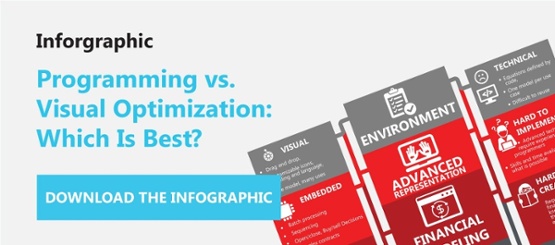The first version of SCOR was released in 1996, and early adopters claimed significant benefits, including improved operational control, performance measurement and meaningful bottom line improvements.
More recently, work has begun on digital solutions to enhance SCOR effectiveness. This includes using prescriptive analytics to model the supply chain. Benefits include automated metric reporting and an ability to identify the right supply chain decisions to improve capabilities.
History of the SCOR Model
SCOR was developed by a management consulting firm, PRTM, which became PricewaterhouseCoopers, and AMR research, which became part of Gartner. SCOR was endorsed by the Supply Chain Council (SCC), an independent non-profit organization that represented the interests of supply chain practitioners. In 2014, the SCC merged with the American Production and Inventory Control Society (APICS), changing its name to ASCM in 2018.
Over the years, SCC and its successors have promoted and developed the SCOR model, licensing it out to users. The current version, SCOR 12.0, has been adapted for omni-channel supply chains and modernized to reflect current best practices. ASCM offers accredited training in SCOR as well as professional SCOR endorsements.
SCOR goals
The goal of SCOR is to help organizations improve Sales and Operational Planning (S&OP). While the concept of S&OP is inherently straightforward, to integrate and match supply, demand and sales within the organization, effective S&OP implementation is notoriously difficult, especially with regard to sustaining results. SCOR provides a framework that allows users to evaluate performance and determine strategies to improve capabilities.

SCOR Model Processes
The SCOR model is based on five core processes:
- Plan: Includes balancing resources, preparing business rules and aligning the supply chain plan with the organization’s financial plan.
- Source: This includes inventory management, sourcing raw materials, supplier agreements and payments.
- Make: Refers to manufacturing and defines whether to make to order, make to stock or engineer to order, includes managing production, BOM, equipment and facilities.
- Deliver: Order receipt and processing, warehousing, delivery, as well as finished goods inventory management and life cycle management.
- Return: Business rules for handling returned product.
These core processes are regarded as level one processes. The SCOR methodology defines a total of four levels, each level representing a deeper dive into each core process. These include:
- Major processes
- Process categories
- Process elements
- Improvement tools
Each level is further subdivided into multiple categories, enabling an extremely detailed specification of supply processes according to specific SCOR attributes that include:
- Reliability
- Responsiveness
- Agility
- Costs
- Asset management
The SCOR roadmap consists of five steps that are repeated over and over again:
- Engage
- Define
- Analyze
- Plan
- Launch

SCOR Strengths
The many levels of detail allow an organization to analyze its supply chain in depth and to determine areas for improvement. Each step is considered critical in terms of managing the supply chain effectively. Strengths of the SCOR process include:
It has high credibility
Thousands of companies have invested in SCOR, and they have seen real improvements in their supply chains. It represents a structured methodology that helps identify areas for improvement. Its standardized approach allows organizations to determine where they stand and their level of supply chain maturity.
Standardized metrics:
Standardized metrics help organizations obtain a realistic, unbiased measure of departmental and functional performance. By deploying SCOR across the organization, Ingersoll Rand was able to establish a common business language as well as measure individual performances. During the process, they discovered the value of APICS certification in production and inventory management (CPIM) because those managers who were certified achieved higher inventory turns and lower backlogs.
Universal scorecards
Using scorecards, it’s possible to evaluate supply chain performance in detail. Balanced scorecards allow the organization to evaluate different units and score performance according to clearly defined criteria. They help in assessing suppliers and determining performance within the businesses segment.
Weaknesses of SCOR as a Management Tool
Although many organizations have benefited from SCOR, it must be remembered that the process was developed at a time when business management software was in its infancy. While the process is still as relevant today, in many ways it has not kept up with changes in how businesses operate nor with advances in computer technology.
Manual evaluation processes
While some organizations have attempted to computerize their processes, there is still great reliance on manual measurement and evaluation. While answers may be found more readily thanks to BI software, detailed implementation, monitoring and review processes are time consuming.
Static not dynamic
SCOR processes are inherently static, measuring performance at a point in time. While historical reporting is important for determining past performance, the time delays inherent in any sort of scorecard evaluation means that the current situation is different from what has been measured. Organizations need information that’s current and not days, weeks or months old to guide their decision making.
Results not directly actionable
The other core issue is that evaluations are not directly actionable. There’s no mechanism to determine the right way forward, except a repeat of the engage, define, analyze, plan and launch cycle. However, in complex situations, there’s no way of knowing if analysis conducted during that cycle is right, except in hindsight. All this takes time, and organizations today need better tools to dynamically optimize supply and demand issues.
SCOR helps perpetuate silo thinking
While some may challenge this statement, the fact that targets and objectives are broken down in detail within functions means there’s great motivation for managers to focus on their own targets to the detriment of overall targets. While the overriding concept of SCOR demands holistic thinking, in practice it does encourage a degree of silo mentality.
Overcome SCOR Model Shortcomings with Business Modeling Software
While the underlying concept of SCOR is sound, the reliance on manual processes to measure and score adherence is problematic. They are simply too slow and error-prone. To an extent, the digital initiative between Deloitte and ASCM has been recognized this with the release of a digital capabilities model for supply networks.
For this approach to be successful, there is surely a need for a model of the organization that captures relevant metrics and with the ability to report current status and compliance dynamically. This is feasible by implementing 5th generation modeling languages that are easy and intuitive to use, allowing organizations to benchmark their businesses, easing SCOR reporting requirements.

Determine How to Meet Targets with Prescriptive Analytics
The other fundamental weakness of the standard SCOR approach is determining what to do next. Granted, the model’s roadmap tool anticipates this problem, but solutions are determined based on best judgment rather than with informed decision-making.
Prescriptive analytics overcomes this issue because of its ability to analyze corporate data and perform scenario analysis to determine which of several possible scenarios is best for achieving specific goals.
Using the SCOR Model and Advanced Analytics to Optimize Supply Chain Performance
That so many organizations have subscribed to the SCOR model demonstrates its usefulness in determining supply chain performance. Its methodical and detailed approach allows organizations to structure their supply chains according to best practices and to measure performance.
Advanced business modeling together with the optimization capabilities of prescriptive analytics has the potential to overcome major SCOR model weaknesses and allow organizations to identify variances dynamically, as well as tune their supply chains for optimal performance.



